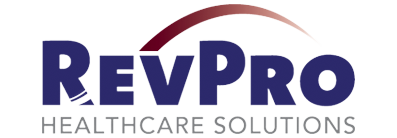COVID-19 has caused the medical profession to go through a major upheaval. Examining patients in person could result in coming into contact with contagious pathogens. As the pandemic continued to spread and the importance of social distancing and handwashing increased, doctors sharpened their telemedicine skills and began working remotely.
Staying Away
Health care is not rebounding to where it was before COVID-19 was introduced and began spreading throughout the world. Many patients are nervous about going into a doctor’s office where they may find themselves amongst sick people. More than one-third of physicians agree that the lack of patients is threatening the viability of their practice. Most small practices work on a fee-for-service model. With fewer procedures and more video visits, the payer reimbursement model has not yet caught up with the traditional in-person model.
Accelerating Telemedicine
In recent years telehealth has become more accepted. With COVID-19 spreading, telemedicine has become an extremely valuable alternative to in-person visits and has transformed the patient-doctor experience. During virtual visits, physicians can still engage with their patients and focus on their well-being while remaining safely distanced.
Practice Management Tips
It’s not just restaurants and retail stores that are at risk of closing due to the pandemic. The reduced number of in-person visits and elective procedures mean many practices struggle with revenue. More than 18 million people have lost work since February, leaving more Americans without their usual health insurance coverage. Households with limited resources and growing financial responsibilities may set aside healthcare in favor of making mortgage or car payments. For many providers, this means making changes in their medical practice management.
Collect Insurance Information before the Appointment
At the point of scheduling a patient’s appointment, your staff should verify the patient’s contact information and current insurance. If utilizing a patient portal or online appointment feature, they should also allow for the update of existing information. This data also enables staff to keep in touch throughout the treatment and patient collections process.
Explain the Cost of Virtual Services before the Appointment
During the COVID-19 pandemic, many payers were able to take advantage of waivers for cost-sharing for virtual services. When those waivers expire, patients need to understand what has changed and why. Some patients may not understand why telehealth visits and in-person visits cost the same. Be prepared to explain that the services still require the healthcare provider’s time and expertise. This is why insurance companies consider them compensable.
Offer Multiple Payment Options
Smaller medical practices can’t rely solely on sending statements and hoping patients pay the bill to keep the doors open. Patient portals and practice management software that helps patients manage their medical billing and enable mobile payments are quite often preferred and well received. However, if the practice caters predominantly to baby boomers, a personalized billing experience may serve the needs of the patient and the provider more effectively.
Getting the patient’s consent to send them text messages allows office staff to send a text with a link to a secured payment site can help patients feel more confident about making payments online. Texting appointment reminders and payment receipts also provide personalized interaction while still streamlining the back-office processes.
Setting up Payment Plans
Many medical practices often have patients who have seen the same doctors for years. Many of these people may have financial difficulties that prevent them from making appointments because they know they cannot pay in full either at the time of the services or the end of the statement period. Offering payment plans with four or five monthly installments can help keep patient volume up and revenue coming in.
Medical billing collections will continue to change through the COVID-19 pandemic, but if linked with streamlined software and management it will be just fine. Many changes were already occurring in healthcare due to technology and patient demand. COVID has caused the changes to happen faster, but streamlined telehealth systems that offer a pleasant experience and a way to keep in contact with your patients will be the way to go.
Call RevPro Healthcare Solutions today to see how we can help streamline your medical practice billing and collections. Please contact us below or call us at 561-578-8400.
Share this article:

